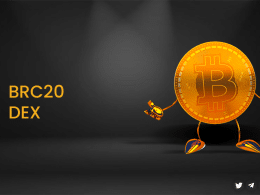Quick Links
Maintaining caution over the risks of investing in cryptocurrencies is crucial as they increasingly gain widespread acceptance. The Exit Liquidity Trap is among these risks; it traps investors by causing them to be incapable of selling or withdrawing their holdings due to inadequate market liquidity. This leads to significant losses and a total absence of financial freedom, detaining investors within an undesirable market.
Before investing in cryptocurrencies, one must take necessary precautions to prevent the Exit Liquidity Trap. Our complete guide outlines the basics of the trap and its significance. Still, more importantly, we will teach you how to evade this situation. Our guide provides investors with actionable measures and strategies to reduce risks in this unstable market.
Whether you’re a seasoned cryptocurrency investor or a beginner, our guide will be a necessary resource to aid you in making well-informed investment decisions. So, please grab a cup of coffee and delve into the details of the Exit Liquidity Trap and how to steer clear of it!
Understanding Liquidity in Crypto
Cryptocurrencies are popular these days, and many folks are engaging in investing in them. Nevertheless, comprehending liquidity is crucial before one delves into the crypto world. In cryptocurrency, liquidity implies the capacity to purchase or sell a particular coin or token without significantly impacting its cost. It denotes the convenience and easiness of converting your crypto assets into cash. High liquidity signifies a coin’s high demand, making it easily obtainable or exchangeable without drastically affecting its price.
Liquidity is a vital aspect of the crypto world. Market liquidity implies the ease of buying or selling a coin or token within the market. It is affected by volume, market depth, and number of buyers and sellers.
High liquidity allows converting crypto assets into cash without significant losses due to selling pressure. Additionally, liquidity contributes to market stability. High liquidity indicates lower market manipulation risks and ensures that the market reflects a crypto asset’s value.
Knowing liquidity can assist in making informed investment choices and avoiding the market’s drawbacks. In essence, liquidity is a crucial dimension of the crypto world which is frequently overlooked.
The Exit Liquidity Trap
Have you encountered a circumstance where you had to sell an asset but no one was willing to buy it from you? That’s what’s referred to as a liquidity trap. In the realm of cryptocurrency, this situation has a specific name- the ‘exit liquidity trap.’
The exit liquidity trap takes place when traders or investors wish to sell a specific crypto-asset but are unable to do so owing to a scarcity of buyers in the market. This makes people who want to close their positions in a specific coin or token incapable of liquidating their assets.
One of the leading reasons behind the exit liquidity trap is a deficiency of trading volume and demand for a specific cryptocurrency. If a coin or token possesses a small market cap and trading volume, there may not be sufficient buyers in the market to meet the number of sellers who are leaving their positions.
A prime example of the exit liquidity trap was observed during the ‘crypto winter’ in 2022 when LUNA underwent a considerable price drop. The abrupt downturn in the market resulted in an influx of investors who desired to escape their positions in specific cryptocurrencies; as a result, the market had a dearth of buyers.
Another instance of the exit liquidity trap generally occurs when a loophole is exploited in the smart contract of DeFi protocols to wash off funds. The event causes the depreciation of the protocol’s token, leading to investors leaving their positions and, eventually, buyers being scarce in the market.
The exit liquidity trap is an alarming scenario for traders and investors in the cryptocurrency market. It underscores the significance of comprehending liquidity and market volatility before entering any coin or token position. In the event of a sudden market downturn, it is essential to be conscious of the liquidity situation to avoid being trapped in a circumstance where you cannot liquidate your assets.
Factors Contributing to the Exit Liquidity Trap
Investors dread the Exit Liquidity Trap as it means holding onto a valuable asset without the ability to sell it due to a lack of buyers in the market. Factors like market volatility, inadequate market depth, limited market participation, and poor market infrastructure contribute to this situation.
Market volatility refers to asset prices’ unpredictability, leading to market uncertainty. This situation reduces investor confidence, leading to low demand for assets. Inadequate market depth happens when there are insufficient orders to execute a trade, making it hard to sell assets, as buyers may not be available at the desired price.
Limited market participation occurs when few buyers and sellers are active in the market, typically in small or new markets. This is because investors may not yet be aware of the asset’s potential. Poor market infrastructure is the absence of transparent rules and regulations that create uncertainty and distrust in the market, resulting in lower participation and liquidity.
To avoid the Exit Liquidity Trap, investors must invest in assets with high liquidity and pay attention to the factors above. This ensures sufficient market depth, market participation, and reliable market infrastructure. Investors can sell their assets when needed without the risk of getting trapped in the Exit Liquidity Trap.
How to Avoid the Exit Liquidity Trap
Feeling uneasy about getting stuck in the exit liquidity trap? You’re not the only one. Several investors have concerns about the possibility of not being able to sell their investments rapidly and at a reasonable price. Don’t worry, though, as there are actions you can take to avoid this trap and secure your hard-earned cash. Let’s get into it.
To begin with, diversify your portfolio. Don’t put all of your resources into one basket. Spread your risk by investing in a range of coins from various sectors and industries.
Secondly, put your money into coins with high market capitalization. These coins are usually more stable and have a greater number of buyers and sellers. This means that they are more likely to have high exit liquidity, enabling you to sell your investments promptly and at a reasonable price.
Thirdly, select coins with active trading communities. Seek coins that have a robust community of investors who are actively buying and selling. This may suggest that the coin has a strong demand and may have high exit liquidity.
Fourthly, stay away from pump and dump schemes. These schemes entail artificially inflating a coin’s price before quickly selling it, leaving unsuspecting investors with useless investments. Be wary of any investment opportunity that promises guaranteed returns or seems too good to be true.
Finally, use dependable and trustworthy exchanges. Stick to reputable exchanges that have a good track record of security and dependability. This can assist you in selling your investments rapidly and at a fair price when you need to.
Hence, by diversifying your portfolio, investing in coins with high market capitalization and active trading communities, avoiding pump-and-dump schemes, and using dependable and trustworthy exchanges, you can steer clear of the exit liquidity trap and safeguard your investments. Keep in mind that investing carries risk, but by taking these measures, you can reduce your risk and invest with confidence.
Key takeaways
As we wrap up this comprehensive guide on avoiding the exit liquidity trap in crypto, let’s quickly recap the key takeaways from the various topics we covered.
Firstly, we learned about liquidity in crypto and how it is a crucial aspect to consider while making investment decisions. Secondly, we delved deeper into the exit liquidity trap and its impact on crypto investments. We identified factors that contribute to this trap and how they can be avoided.
We discussed the importance of diversifying investments, conducting thorough research before investing and keeping a close eye on market trends. Additionally, we highlighted the significance of staying updated with the latest news and regulations in the crypto industry.
In conclusion, it is essential to approach crypto investments with caution and a well-thought-out strategy to avoid falling into the exit liquidity trap. By keeping in mind the factors discussed in this guide, you can make informed investment decisions and navigate the crypto market with greater confidence.
Finally, we encourage you to continue learning and exploring the exciting world of crypto. Keep up with the latest trends and regulations, and don’t hesitate to seek advice from experts in the field. Remember, investing in crypto is a long-term game, and the key to success is a patient and strategic approach.









